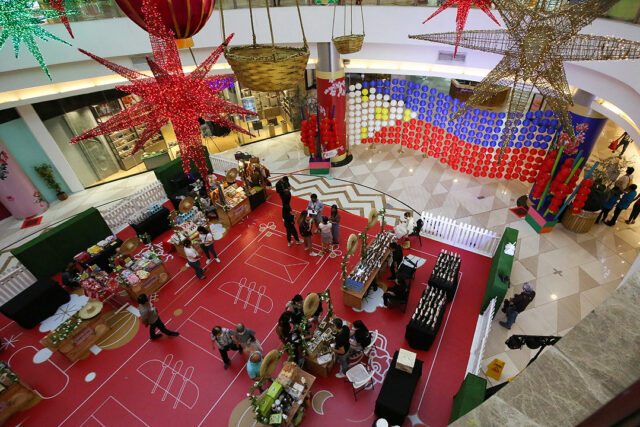Inflation, interest rates may dampen retail sector growth in 2023

Revin Mikhael D. Ochave, Reporter
THE PHILIPPINE retail sector’s growth is projected to slow next year, as consumer spending will likely be affected by elevated inflation and rising interest rates.
Barsali Bhattacharyya, Economist Intelligence Unit (EIU) industry manager, told BusinessWorld that local retailers will be affected by weaker consumer spending.
“In 2023, the pace of growth will slow to 2.7% as persistently high inflation and the increase in domestic interest rates hurt consumers’ spending power,” Ms. Bhattacharyya said via e-mail.
The Bangko Sentral ng Pilipinas (BSP) has raised benchmark rates by 225 basis points so far this year to tame inflation and address the peso’s weakness.
Inflation accelerated to 6.9% in September, bringing the nine-month average to 5.1% as prices of food, commodities and utilities continue to rise. The BSP expects inflation to average 5.6% this year, and 4.1% in 2023.
Consumers will have to spend more on food next year, as global commodity prices remain elevated, Ms. Bhattacharyya said.
“High global agriculture commodity prices will force consumers to spend more on food and essentials, pushing up the share of food retail sales to over 59% in 2023. We expect this share to remain above the 2019 levels until at least 2025, underscoring the country’s dependence on food imports,” she said.
This year, the retail sector is seen growing 5.9%, mainly driven by the reopening of the economy and easing of coronavirus disease 2019 (COVID-19) restrictions, Ms. Bhattacharyya said.
“The Philippines’ consumer market has been recovering strongly from the pandemic-induced slowdown. The relaxation of COVID-19 measures bodes well for consumption and in 2022 we estimate retail sales to increase by 5.9% in real terms, stripping off the effect of inflation,” Ms. Bhattacharyya said.
Online sales will continue to rise in 2023 on the back of increasing digitalization in the country.
“The strong shift to digitalization seen during the pandemic will continue to gain ground, with online sales of goods forecast to account for 4% of total retail sales in 2023,” Ms. Bhattacharyya said.
Meanwhile, Philippine Retailers Association (PRA) Vice Chairman Roberto S. Claudio said the group has a slightly higher growth forecast for next year, compared with the EIU’s projection.
“We have a higher growth forecast for 2023 at 3.5% owing to further easing of COVID-19 protocols and consumer expenditures with people having more freedom to travel with end of lockdowns and policies to boost local tourism,” he said in a phone interview.
Mr. Claudio said the retail sector is showing better growth this year as consumers return to malls and shops.
“We’re almost aligned with EIU for 2022 growth rate. This figure was picked from the PRA figures of consumers who are returning to in-store and mall shopping, while online continues to grow but a slower rate than in 2020-2021,” Mr. Claudio said.
He does not expect consumer spending to be significantly affected by rising inflation and interest rates.
“During bad economic conditions, consumers spend more on food, recreations such as alcohol, sports, and outdoor activities. Luxury goods will suffer. People look for escapism during hard times,” Mr. Claudio said.
Rizal Commercial Banking Corp. Chief Economist Michael L. Ricafort said that the growth of the retail sector could reach 6% in 2023, matching the economy’s gross domestic product (GDP) expansion.
The government targets 6.5-8% GDP growth in 2023.
“The further reopening of the economy led to more employment; increased sales and more economic activities, thereby supporting retail sales… Online retail and other business transactions would also be boosted by further reopening of the economy, as these have been accelerated since the pandemic,” Mr. Ricafort said.
“However, higher prices and spending on food and other basic commodities due to higher global and local inflation, as well as higher interest rates/borrowing costs would offset the growth in retail sales, both online and physical stores, and overall economic growth,” he added.
